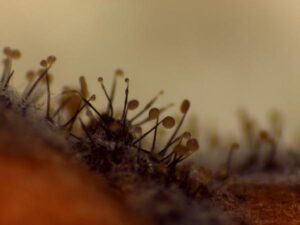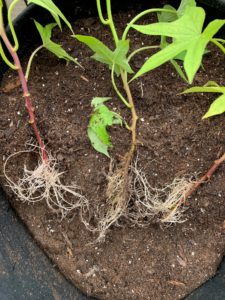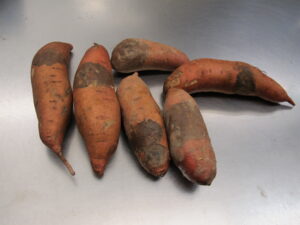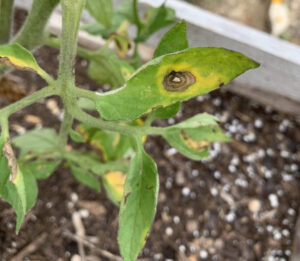Sweet potatoes are a popular crop with home gardeners and commercial growers alike. The sweet root vegetable is easy to grow and a nutritious side dish to be enjoyed throughout the year, not just at Thanksgiving. But just like other root vegetables such as carrots, turnips, and beets, sweet potatoes are susceptible to diseases. One such disease is called sweet potato black rot. In this article, you will learn how to identify and prevent the disease from potentially destroying your tuber harvest.
What is Sweet Potato Black Rot?
Sweet potato black rot is caused by the fungus Ceratocystis fimbriata. In addition to sweet potatoes, various strains of Ceratocystis fimbriata can also infect woody plants like cassava, mango, taro, cacao, fig, eucalyptus, and coffee.

The fungus is transmitted via insects like sweet potato weevils, as well as contaminated tools, gloves, containers, and other items that have come into contact with the spores.
Black rot is preventable, but once plants have become infected, it is difficult to control.
How To Identify Sweet Potato Black Rot
Sweet potato black rot can occur during any stage of tuber production. Vines and stems may develop lesions or display stunting, wilting, leaf drop, and even plant death in severe infections.
Concerning the root vegetables, symptoms may not be visible until the potatoes are harvested, at which time dark, bruise-like lesions may be visible on the skin. The flesh of the potato may or may not be affected. Furthermore, symptoms may not develop until after potatoes are in storage.

The lesions occur when the fungus breaks down the vascular layer causing small sunken spots to appear. Over time, the spots will darken and spread relatively quickly. Insects will be attracted by the pathogen’s sweet, fruity smell, and they will, in turn, become vectors in spreading the disease to other plants.
Infected potatoes should be thrown away as they are not edible because of their bitter taste. Even tubers with no visible signs can develop a bitter taste. Do not compost infected potatoes or plant material, as compost piles often do not maintain high enough temperatures to kill the pathogen.
Black rot can resemble another fungal disease called sweet potato scurf. However, the latter is characterized by purple-brown to black lesions that are generally only superficial and spread very slowly during storage.
How to Prevent Black Rot
Unfortunately, fungicides are not able to control a black rot infection. Thus, prevention is the most effective way to protect your garden. The following guidelines are helpful measures you can implement:
- Black rot fungus can remain in the soil for several years. Therefore, it is important to rotate crops, preferably at a three year minimum.
- The fungus can be transmitted from infected plants, roots, and slips. Therefore, it is important to use disease-free slips you have grown yourself or to purchase slips from a reputable source.

- While fungicides do not control the pathogen once it is established, slips can be protected by dipping them in a fungicide before planting.
- Remove garden debris from sweet potato crops and related plants like morning glories, where fungal spores can overwinter.
- Cure the sweet potato harvest in a single layer in a room with a temperature of about 80 F (27 C) for about two weeks. This step will allow any wounds that developed during harvesting to heal, thus, eliminating potential areas for spores to take hold.
- Do not store questionable potatoes because, if infected, the fungus can spread throughout the stored harvest.
- Sanitize garden tools, containers, gloves, and other items that may have come into contact with infected plants. Practicing good garden hygiene is important even if there is no sign of disease. You can learn more about how to disinfect garden items in this helpful article.

Sweet potato black rot can cause significant damage. But taking preventative steps each growing season can help you avoid the problem.
Thank you for reading this article! If you found it interesting or helpful, please consider sharing it with others via email and social media!




